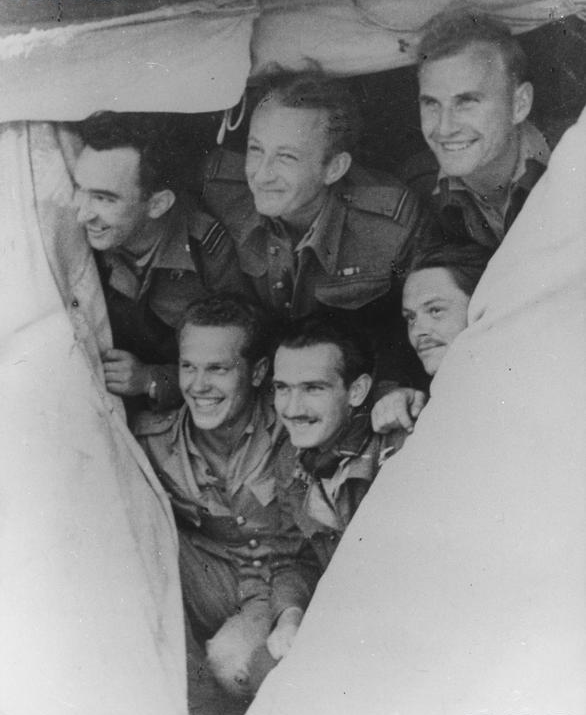Tunisia is now a country located between Algeria and Libya. On its territory, in the spring of 1943, the battles were fought between the advancing Allied forces against the German Africa Korps and the Italian Army. The Polish Fighting Team, the so-called Skalski’s Circus, took part in the battles in the air over this country.
The commander of the group was Capt. pilot Stanisław Skalski. The Polish Fighting Team (PFT) was formed on 5 February 1943. It consisted of a selected group of 15 experienced fighter pilots who were to gain new combat and command experience in tactical cooperation with ground troops fighting in North Africa (British 8th Army). The Poles arrived by sea from the UK to Algiers, took Spitfire aircraft from the British and joined the British 145th Fighter Squadron as ‘C’ Squadron. During the fighting they took off from three field airfields – at Bu Grara (near Medenin on the Mediterranean), at La Fouconnerie and at Goubrine.
The Poles made their first operational flights on 16 March 1943, and on 28 March they boasted their first air victories. At that time, Capt. Skalski and Lt Cdr Eugeniusz Horbaczewski each shot down a Junkers Ju-88 aircraft. In addition, the Polish pilots were tasked with providing cover for British aircraft bombing German fortifications along the Mareth Line and carrying out patrol flights in the Tunis and Bizerta areas.
The Polish team achieved its greatest success on 20-22 April, shooting down as many as 13 German and Italian planes. It remained active until 12 May 1943. Two days later, the Afrika Korps capitulated and hostilities in Tunis ended.
In total, Polish pilots shot down 25 enemy warplanes in Tunisia and damaged 9. The most, i.e. 5 planes, were shot down by Lt. Pilot Horbaczewski. Their own losses in combat were one pilot. He was Lt. Mieczysław Wyszkowski, who was shot down on 18 April, wounded and taken prisoner by the Germans. The Team proved to be the best squadron fighting over North Africa. With 15 pilots and 10 aircraft, it flew 539 sorties.
After the spectacular victories of the Polish Fighting Team, the British gave it the name – ‘Skalski’s Circus’ – in recognition of the squadron and its commander.
The battles of the Polish pilots in Africa were commemorated on the Tomb of the Unknown Soldier in Warsaw, with an inscription on one of the plaques prepared after 1990.





